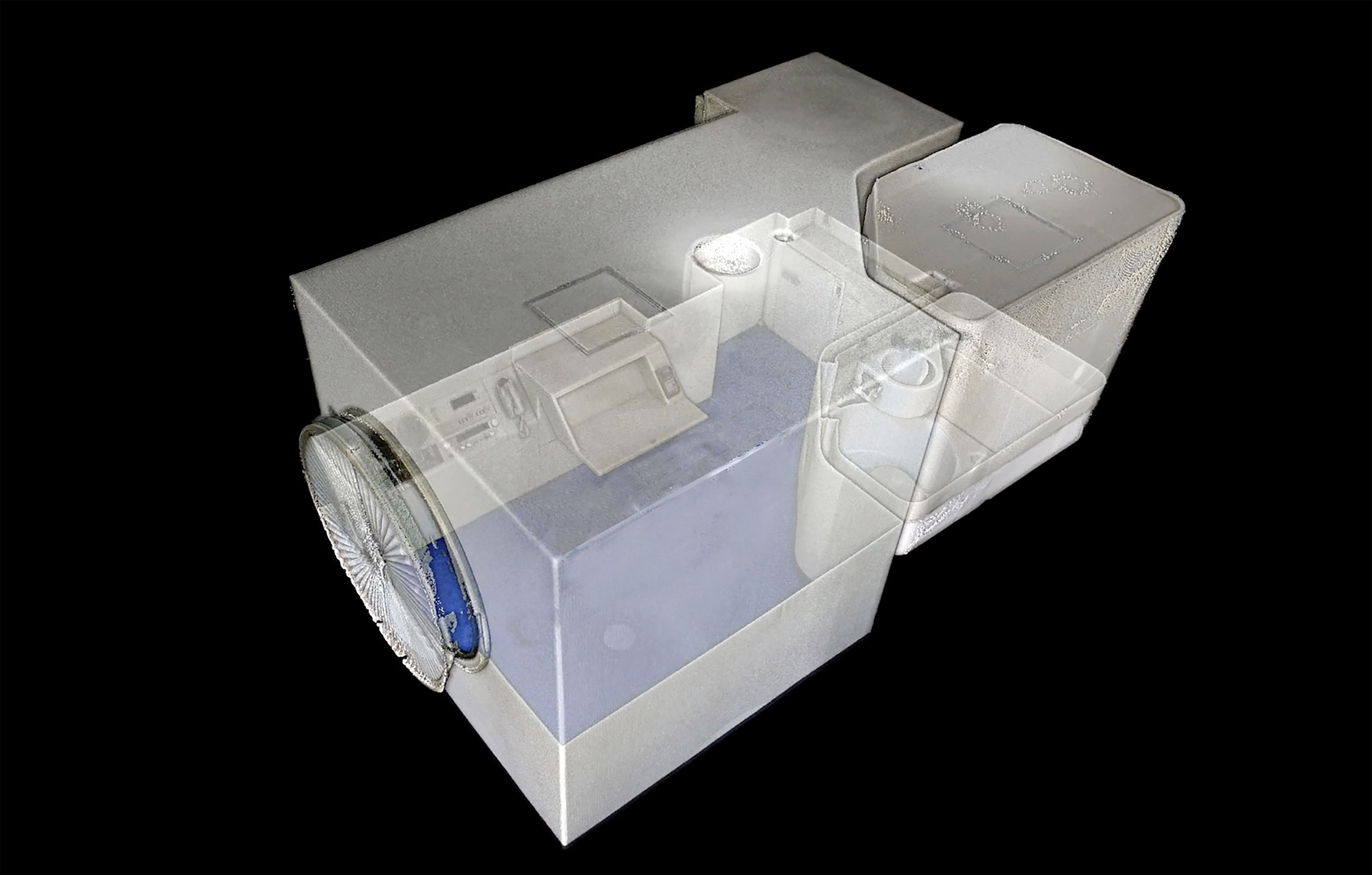In order to pass on the value of the building to future generations, Japanese digital consultancy Gluon named "Nakagin Capsule Tower Building 3D Digital Archive" project is being carried out to accurately record its complex shapes using 3D measurement technology and save them as 3D data.
Gluon makes the data of the actual space completely 3D by using scans of the entire building based on actual measurements that combine the data of a laser scanner, an extremely accurate virtual model, capable of accurately measuring distances in millimeters together with the photo data from more than 20,000 shots captured by drones and single lens reflex cameras. In addition to the 3D records of complex shapes and structures which can't be fully recorded by flat photos and drawings alone.
The architectural shapes are accurately understood and left as 3D data for future generations by recording as-is the tracks of any alterations produced by residents while living in the space, as well as changes in the building's appearance over time.

Gluon is creating a digital model of the Nakagin Capsule Tower.

Gluon is creating a digital model of the Nakagin Capsule Tower.
After the goal has been reached, the 3D point cloud data will be released free of charge on the website as open source data, creating opportunities that will lead to new academic research and creative activities.
The team is working on record preservation by conducting academic research in cooperation with the "Nakagin Capsule Tower Building A606 Project."
Gluon makes the data of the actual space completely 3D by using scans of the entire building based on actual measurements that combine the data of a laser scanner, an extremely accurate virtual model, capable of accurately measuring distances in millimeters together with the photo data from more than 20,000 shots captured by drones and single lens reflex cameras. In addition to the 3D records of complex shapes and structures which can't be fully recorded by flat photos and drawings alone.
The architectural shapes are accurately understood and left as 3D data for future generations by recording as-is the tracks of any alterations produced by residents while living in the space, as well as changes in the building's appearance over time.

Gluon is creating a digital model of the Nakagin Capsule Tower.

Gluon is creating a digital model of the Nakagin Capsule Tower.
After the goal has been reached, the 3D point cloud data will be released free of charge on the website as open source data, creating opportunities that will lead to new academic research and creative activities.
The team is working on record preservation by conducting academic research in cooperation with the "Nakagin Capsule Tower Building A606 Project."









































